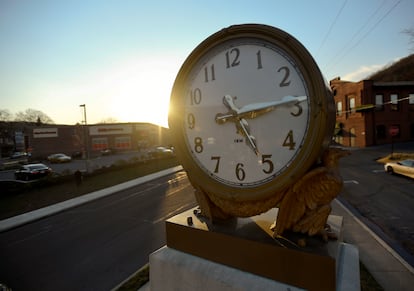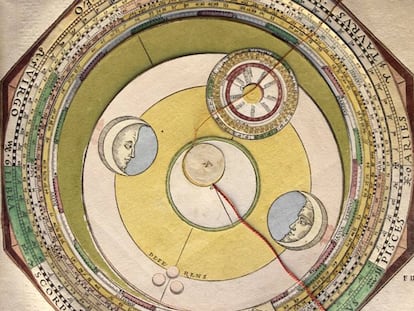US Daylight Saving Time 2024: When does it start and everything else you need to know
In 2024, DST is set to begin on March 10 and end on November 2

The origins of daylight saving time in the United States trace back to an ironic essay by Benjamin Franklin in 1784, titled An Economical Project to Lower the Cost of Light, published in The Journal of Paris. In it, Franklin humorously proposed that Parisians could save on candle expenses by rising earlier to utilize daylight, though it remained largely a joke with no immediate impact.
Germany became the pioneer of daylight saving time during World War I, implementing it on May 1, 1916, primarily to conserve fuel. Before long, the rest of Europe followed. The United States adopted it two years later with the enactment of the Standard Time Act on March 19, 1918, also known as the Calder Act, named after its sponsor, Senator William M. Calder. This legislation standardized time zones and introduced daylight saving time, dividing the country into five time zones.
Although Congress initially repealed daylight saving time despite President Woodrow Wilson’s objection, it became a local option for states. New York, due to its economic influence, retained daylight saving time and encouraged other states to adopt it.
During World War II, President Franklin Roosevelt instituted year-round daylight saving time nationwide, termed “War Time,” until September 30, 1945. Following this period, the absence of federal regulation led to varying state schedules, prompting the transportation industry to advocate for federal regulation in the early sixties. Consequently, the Uniform Time Act of 1966 was signed by President Lyndon Johnson, establishing standardized daylight saving time practices across the country.
Since then, the schedule has been maintained with occasional adjustments, such as a full-year implementation in 1974, while the time in which it is applied during the year has been extended.
When is daylight saving time in the United States?
Daylight saving time in the United States begins on the second Sunday in March and ends on the first Sunday in November. This year, it will start on March 10, 2024, and it will end on November 2.
In 2025, DST will start on March 9 and will end on November 2, and for 2026, the dates will be March 8 and November 1.
What time is the change to daylight saving time in the United States?
The change of summer begins at 2:00 a.m., time in which the clocks must move forward one hour, to 3:00 am. In autumn, clocks go back one hour, from 2:00 a.m. to 1:00 a.m. Most electronic devices do this change automatically.
What states (and territories) do not follow daylight saving time in the United States?
Arizona, Hawaii, American Samoa, Guam, the Mariana Islands, Puerto Rico, and the Virgin Islands are the states and territories that do not observe daylight saving time.
Will daylight saving time be permanent in the United States?
Federal regulations currently prevent states from adopting permanent daylight saving time. While proposed changes in federal law, such as the Sunshine Protection Act, have yet to undergo voting procedures in 2024, numerous U.S. states are contemplating legislation to eliminate these clock changes. However, there is notably less momentum compared to previous years, according to the National Conference of State Legislatures.
Sign up for our weekly newsletter to get more English-language news coverage from EL PAÍS USA Edition
Tu suscripción se está usando en otro dispositivo
¿Quieres añadir otro usuario a tu suscripción?
Si continúas leyendo en este dispositivo, no se podrá leer en el otro.
FlechaTu suscripción se está usando en otro dispositivo y solo puedes acceder a EL PAÍS desde un dispositivo a la vez.
Si quieres compartir tu cuenta, cambia tu suscripción a la modalidad Premium, así podrás añadir otro usuario. Cada uno accederá con su propia cuenta de email, lo que os permitirá personalizar vuestra experiencia en EL PAÍS.
¿Tienes una suscripción de empresa? Accede aquí para contratar más cuentas.
En el caso de no saber quién está usando tu cuenta, te recomendamos cambiar tu contraseña aquí.
Si decides continuar compartiendo tu cuenta, este mensaje se mostrará en tu dispositivo y en el de la otra persona que está usando tu cuenta de forma indefinida, afectando a tu experiencia de lectura. Puedes consultar aquí los términos y condiciones de la suscripción digital.
More information
Archived In
Últimas noticias
‘Fallout’ or how the world’s largest company turned an anti-capitalist apocalyptic Western into a phenomenon
From inflation to defending migrants: Eileen Higgins and Zohran Mamdani inaugurate the new Democratic resistance against Trump
EU’s prestige at stake with proposal to fund Ukrainian war effort with Russian assets
Mustafa Suleyman: ‘Controlling AI is the challenge of our time’
Most viewed
- ‘El Limones’ and the growing union disguise of Mexican organized crime
- Christian Louboutin: ‘Young people don’t want to be like their parents. And if their parents wear sneakers, they’re going to look for something else’
- ‘We are dying’: Cuba sinks into a health crisis amid medicine shortages and misdiagnosis
- The low-cost creative revolution: How technology is making art accessible to everyone
- A mountaineer, accused of manslaughter for the death of his partner during a climb: He silenced his phone and refused a helicopter rescue











































